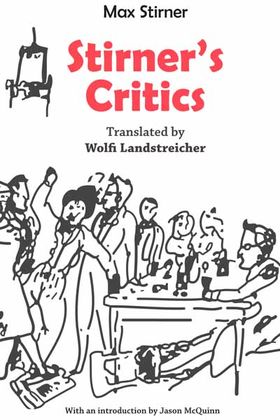Stirner’s Critics
£7.50
new translation of Stirner’s responses to his critics, LBC 2012
In stock
Description
Brand new translation of Stirner’s responses to his critics, translated with care by Wolfi Landstreicher, with an introduction by Jason McQuinn.
Max Stirner’s 1844 masterwork, Der Einzige und sein Eigenthum (The Unique and Its Property), is one of the most subversive, radical and extreme texts in all of history. It can also be described as one of the most misread, misinterpreted and misunderstood books in the history of modern Western thought. This should not be unexpected. Subversive, radical and extreme texts will always obtain hostile receptions from those targeted by their critiques, whether the critiques are accurate and justified or not.
The book is rather simply – though very cleverly – written with very little use of technical terminology. And Stirner goes out of his way in an attempt to use common language wherever possible, though he often does so very creatively and idiosyncratically. It is also a fairly demanding text for anyone (including nearly every contemporary reader) who is unfamiliar with the cultural background within which it was conceived, written and published. It is possible for it to be read and appreciated without knowledge of this background, however the prospect of adequate understanding – not only of the central points but also their extensive implications – definitely recedes the less a reader is familiar with topics like nominalism, phenomenology, hermeneutics, analytical and dialectical logic, and critiques of religion, ontology, epistemology, ideology and language that were current in Stirner’s day.
From the moment Stirner’s text first appeared, it directly and fundamentally challenged every religion, philosophy and ideology. It didn’t just politely challenge every existing historical religion, philosophy and ideology, which would already have been enough to have made its author many enemies. It also blatantly and scathingly challenged every existing contemporary religion, philosophy and ideology of the day. This, unsurprisingly, made its author persona non grata for all theologians, philosophers and ideologists busily working to perfect or put into practice their grand ideas and theories.
Thus the stage was set for over a century and a half of (most often successful, because most often unopposed) mystification of Stirner’s intentions by his many critics from 1844 through the present. Even the great majority of self-proclaimed proponents of Stirner’s work too often tended to add to the mystification through their own misunderstandings and unself-critical oversimplifications.
from the introduction





